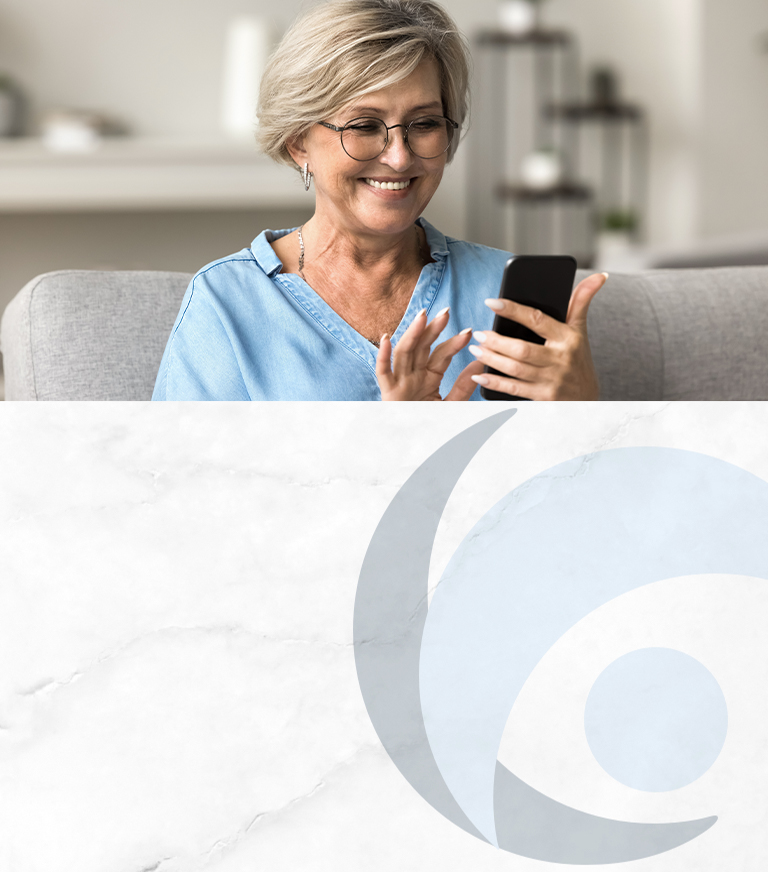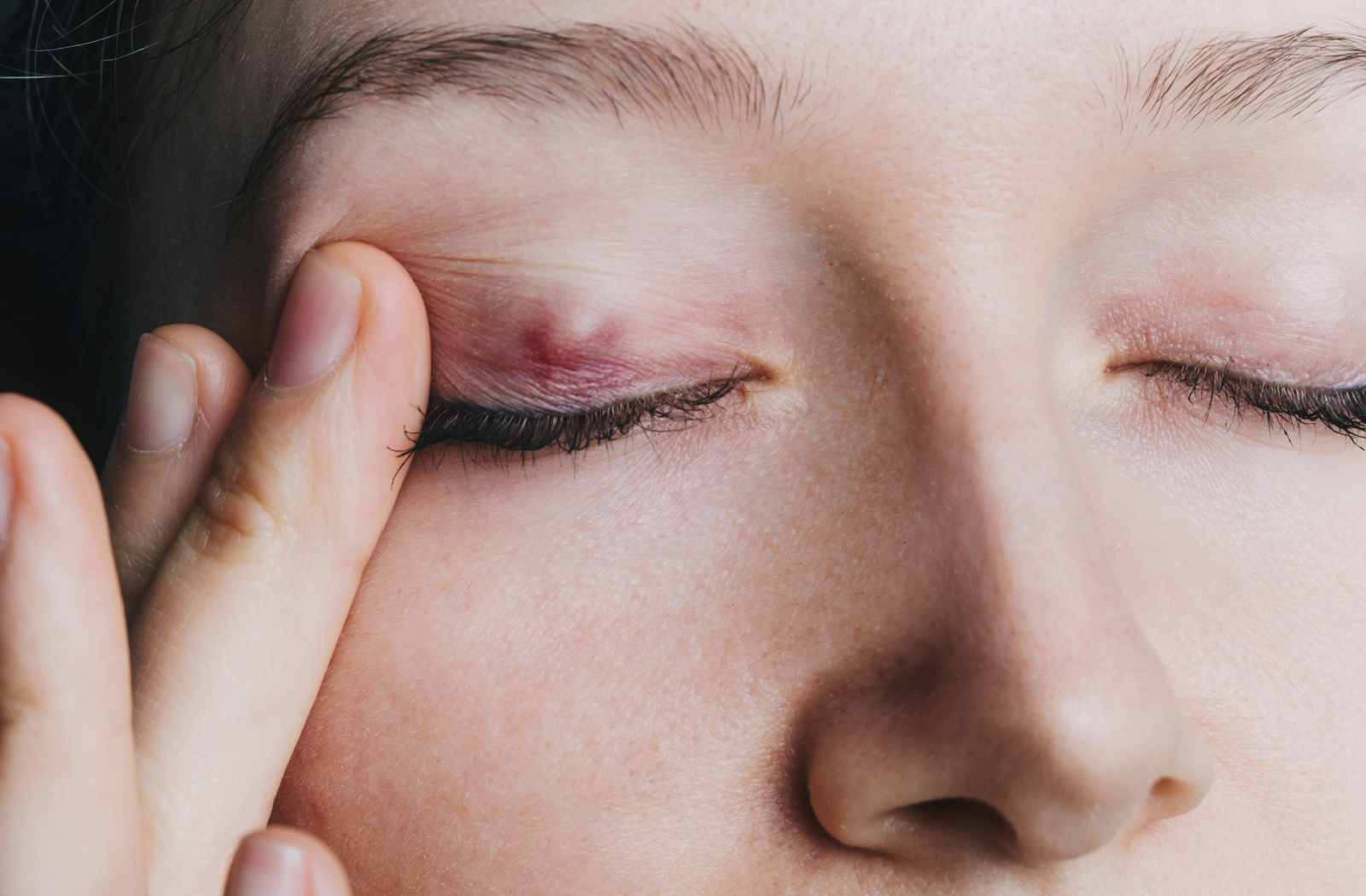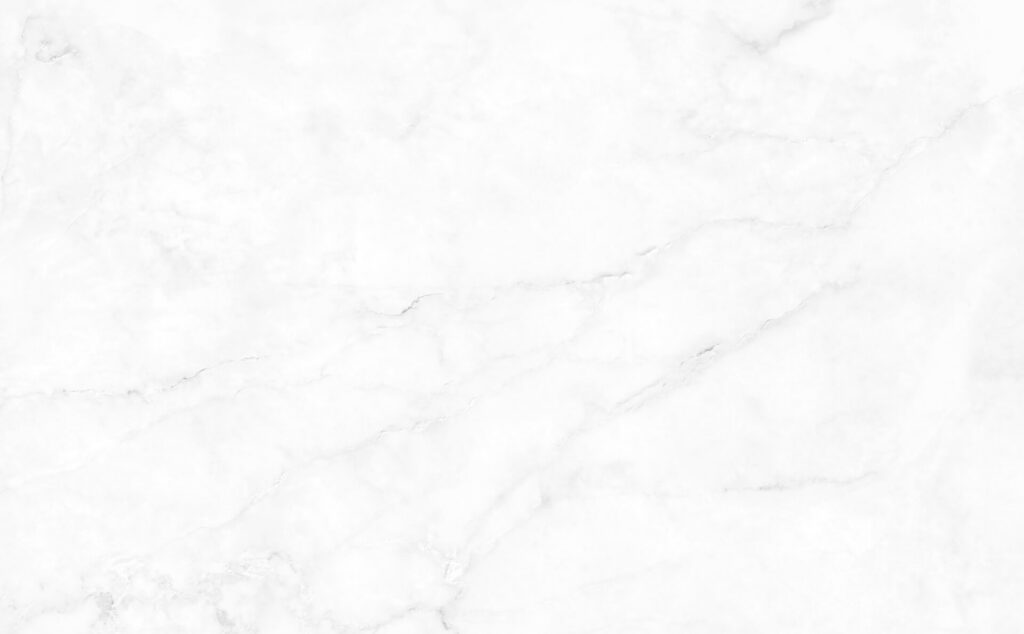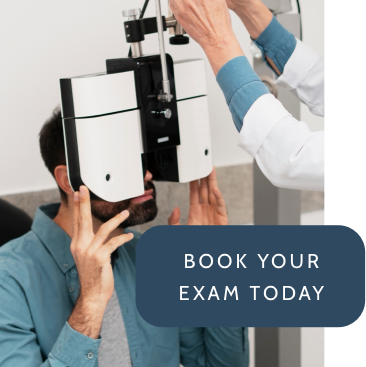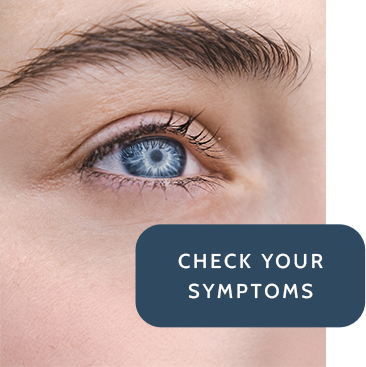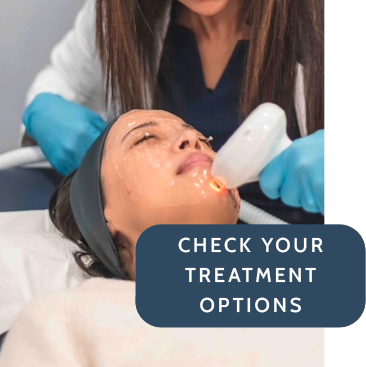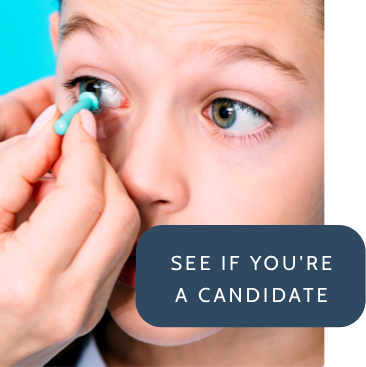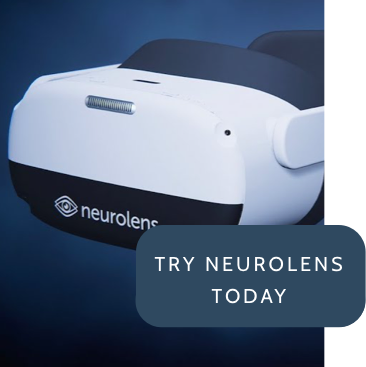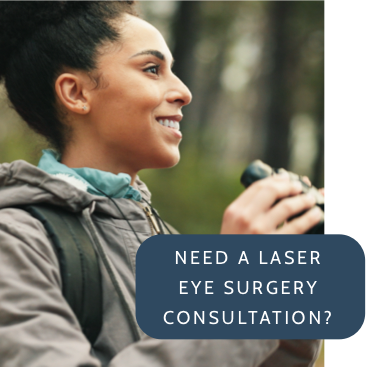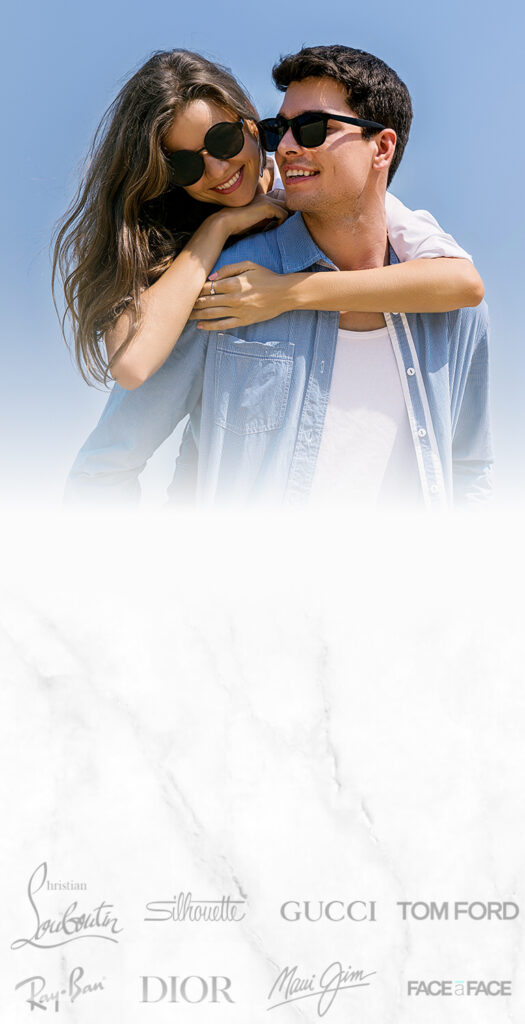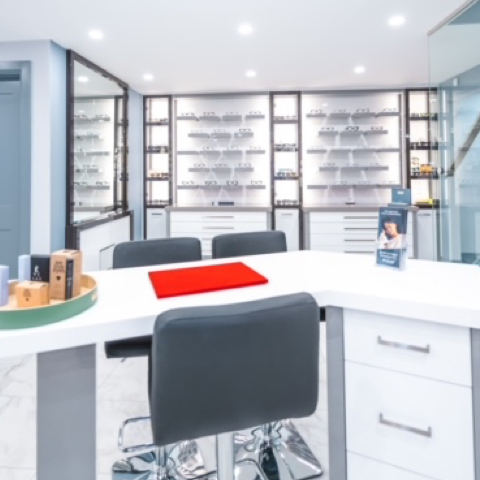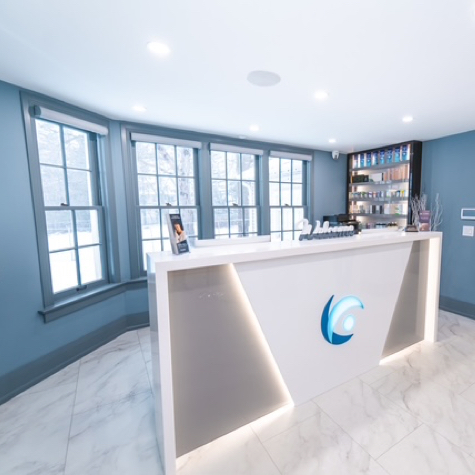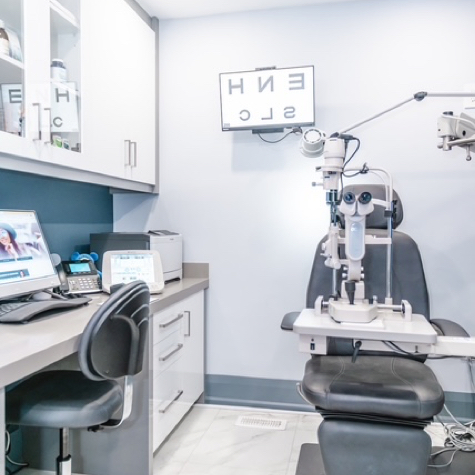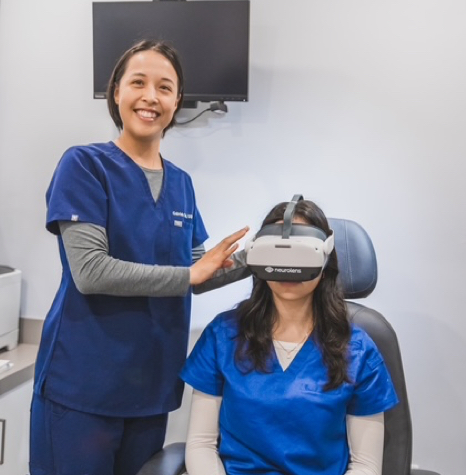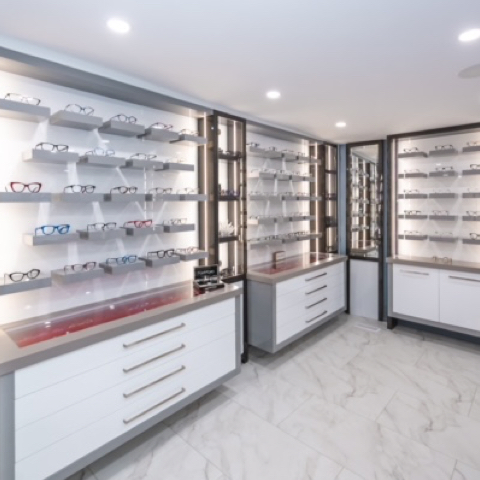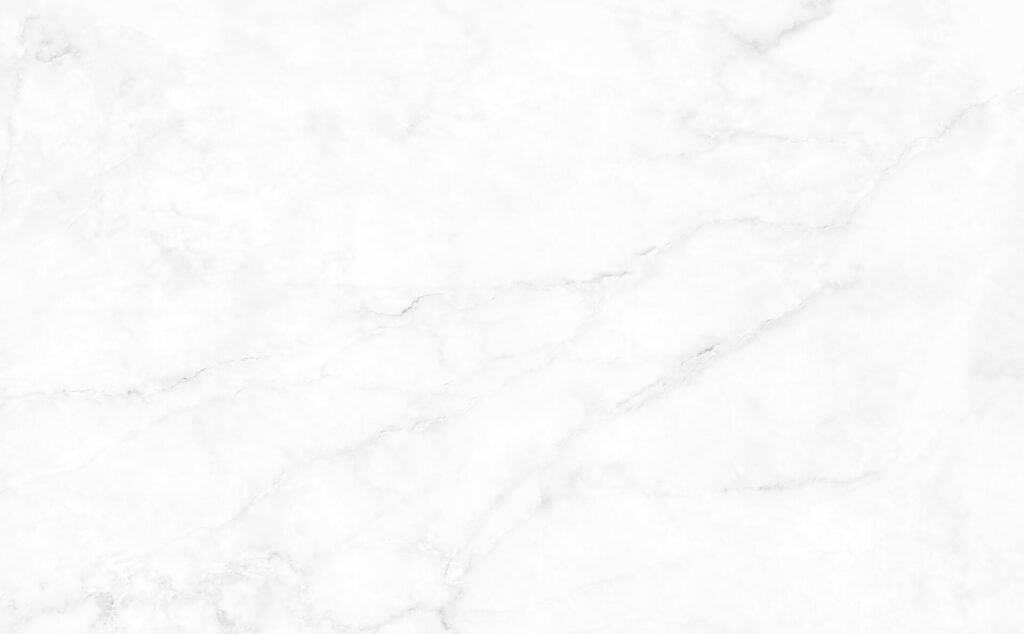A chalazion is a little red lump you notice on your eyelid. They’re not usually painful, but they can be a little uncomfortable to look at—and if they grow too large, they can start to affect your eye. But how do you get rid of a chalazion?
Never try to remove a chalazion yourself. Your eyes are extremely sensitive, and you can hurt them if you aren’t careful. If you notice a chalazion, reach out to your optometrist—they’re an eye care professional and can help you out!
What Can Cause a Chalazion?
Near the base of your eyelid, there’s a tiny thing called the meibomian gland. This gland is responsible for making the oils for your tears. It stops them from evaporating, keeps their surface smooth, and helps protect the eyes.
But sometimes, this gland can have issues. If it gets blocked in any way, the oils build up. The duct that moves the oils can start to swell and irritate the surrounding area, and since it’s so small, you might not notice right away. Eventually, the liquids in the oils drain away, leaving behind a small, hard lump about the size of a small pea—a chalazion.
Good Eye Hygiene to Prevent Chalazions
Maintaining good eye hygiene is essential in helping prevent chalazions.Proper cleanliness helps reduce gland blockage, decreases bacterial growth around the eyes, and lowers inflammation, thereby promoting the health and function of the eyelid’s oil glands. Regular cleaning practices, including using warm compresses and eyelid hygiene wipes, not only prevent the formation of chalazions but also support overall eye health and prevent recurrences in those who have had them before. These measures are crucial for anyone looking to maintain healthy eyes and prevent eye-related issues.
Our recommended eyelid hygiene & dry eye prevention products:
- Thealoz Duo – a natural preservative free artificial tear that helps regenerate the ocular surface while lubricating the eye for long-lasting relief and restoring the eye’s normal environment.
- Blephaclean Eyelid Wipes – Blephaclean’s anti-bacterial properties allow a deep clean while still remaining gentle for even the most sensitive skin.
- I-VU Omega-3 – I-VU OMEGA-3 Liquid is the first and only formulation for Dry Eyes with High Daily Levels of Omega-3, GLA and Vitamin D3, with a total of 2280 mg of essential omega-3s in one daily dose.
- Bruder Mask – A clinically proven and natural way to treat chronic dry eye, mgd and blepharitis. The Bruder eye compress warms the internal glands of the eyelid to release natural oils onto the ocular surface, providing relief for patients and slowing tear evaporation.
Does a Chalazion Usually Hurt?
When a chalazion forms, it doesn’t usually cause any kind of pain. At first, you might experience some irritation and inflammation. The area might turn red, purple, or yellow as it gets more irritated. These feelings of discomfort often go away as the oils solidify, leaving a visible lump on the eyelid. Then, you might start to notice:
- Visible redness in the area
- Swelling
- Excessive tearing
If your chalazion grows too large, it can put minor pressure on the eye and change your vision. This makes it crucial to know what to do if you develop a chalazion—it never hurts to protect your eyes, after all! And if it gets infected, it can start to cause more damage and problems to the area.
The Importance of Proper Eye Care
Sometimes, you might get lucky, and your chalazion will resolve itself. But this isn’t the case for everybody, and you shouldn’t rely on this. Even though a chalazion is usually harmless, it’s technically an eye emergency. And once you have one, it’s possible that it can return in the future.
Never try to remove a chalazion on your own. Your eyes are an extremely sensitive part of your body, and you don’t want to do any damage to them! You might scar them, scratch your eye, or cause unnecessary harm to the surrounding area, and that can be difficult—or impossible—to fix.
You should always try to care for your eyes properly. You should:
- Never try to remove any object from your eye on your own.
- Never use tweezers, scissors, or any other pointed object near your eyes.
- Never apply ointments or medication unless a trained eye care or healthcare professional prescribes them.
If there’s ever a problem with your eyes, don’t try to solve it yourself. Instead, you should seek professional help.
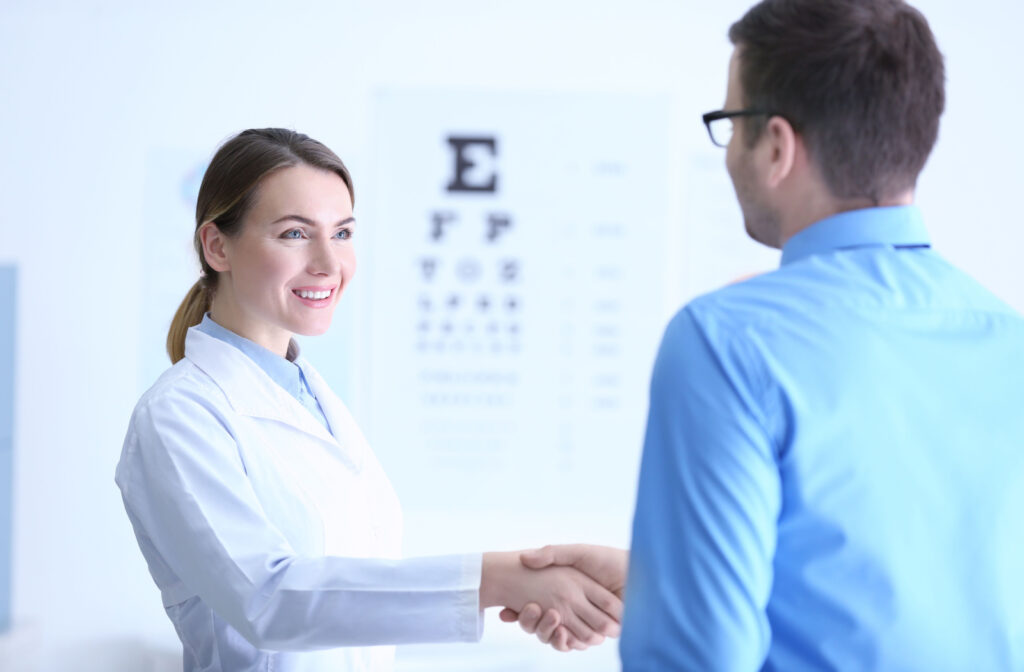
What to Do if You Have a Chalazion
So what do you do if you have a chalazion? It’s easy—visit your optometrist as soon as you can. You don’t want anything to get infected, and they can help.
Remember, your eye is an extraordinarily complex organ, and your optometrist is an eye care professional. They can look at the area during a comprehensive eye exam to determine how to treat your chalazion. And if you’re noticing any changes to your chalazion’s size, shape, or colour, it becomes more and more important to get professional care—the area might be infected.
Your optometrist might recommend:
- Warm compresses to bring relief.
- Topical antibiotics to avoid infection.
- IPL (intense pulsed light) treatment to soothe the meibomian gland and stimulate the area. This can help clear up the blockage and release any trapped oils. It also helps remove bacteria from the area and lowers your risk of infection!
So, speak to your optometrist. They’ll be able to give you advice tailored to your unique situation and help you build a plan of action to treat your chalazion.
Come See Our Team
At Dr. Zargar Eyecare, we’re here to support your eye health. If you’re dealing with a chalazion or any other eye concerns, don’t hesitate to reach out. Our team is committed to caring for your eyes in a friendly, welcoming environment. Book an appointment with our team today!
